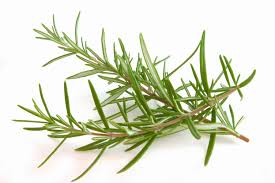
Health Benefits:
Anti inflammatory
Anti viral qualities
Combats fatigue
Fights free radicals
Fights migraines
Increases stamina
May reduce risk of birth defects
May reduce risk of cancer
May reduce risk of osteoarthistis
Relieves arthritis
Nutrition:
Serving size: 1 tbsp; Calories: 2; Fat: 0.1g; Cholesterol: 0mg; Sodium: 11 mg; Carbs: 0.4 g; Fiber:.2g; Sugars: 0g; Protein: 0.1 g; Potassium: 0% DV; Vitamin A: 1%DV; Vitamin C: 0%DV; Calcium: 0%DV; Iron: 0%DV
Did You Know?
- It is one of the most common aromatic wild plants of the Mediterranean landscape
- Rosemary is an evergreen bush that grows to a height of two to six feet with pale blue flowers and spiky leathery leaves
- It does not like moisture laden areas of the garden. You can grow it from rooted parts of the existing plant or from cuttings
Ways to Eat:
- Edible, but not for eating raw
- Great in soups
- Great for baking
Farming Trivia:
- Rosemary is actually a bush perennial that grows in abundance in the Mediterranean area (Spain, Italy, Portugal, Southern France, Greece and North Africa as well as in isolated areas of Turkey, Lebanon and Egypt)
- The reason for its popularity is its aromatic fragrance and the essential oil scent of camphor
- Rosemary is one of the most commonly used herbs in Italy especially for roast lamb and kid
Note: Always consult a physician for any specific health questions and concerns. Some of this information may be subject to change should there be any new findings from Federal Health Administration (FHA), Food & Drug Administration (FDA), American Medical Association (AMA), American Cancer Society (ACS), and / or other leading food, nutrition and medical advisors.

